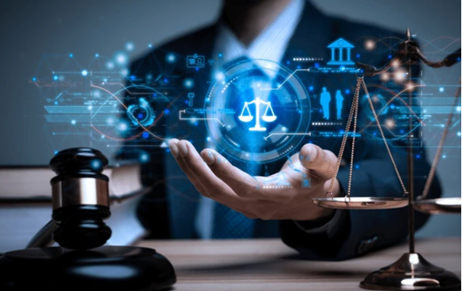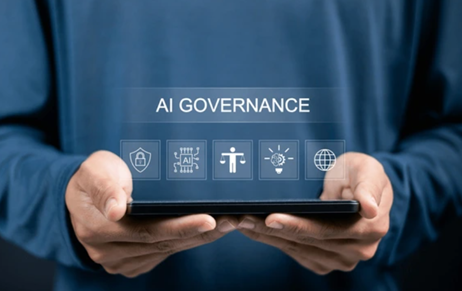As technology advances, transforming artistic expressions like games into vast databases has sparked debates on…
Rules on Live-streaming of Court Proceedings
Introduction
The ability to watch live court hearings is included in the right to access justice, which is guaranteed by Article 21 of the Constitution. In the Mirajkar case, it was decided that “the proceedings of a Court of Justice shall be open to the public, save in extraordinary situations.” An e-Committee of the SC published the Draft Model Rules of Live Streaming and Recording of Court Proceedings in May 2021 in order to advance judicial accountability, transparency, and the rights of citizens to be informed of Court processes and reasoning, which are covered by Article 19(1)(a). These are based on the principles outlined in Swapnil Tripathi v. Supreme Court of India, which addressed concerns about confidentiality, privacy (prior consent) of litigants and witnesses, access restrictions to trial proceedings, and the preservation of the larger public interest due to the sensitivity of the proceedings. The “103rd Report on the Functioning of Virtual Courts/Court Proceedings through Video Conferencing,” which was presented in September 2020 by the Parliamentary Standing Committee on Personnel, Public Grievances, Law and Justice after being authorised by the Standing Committee of the Parliament, also made note of the significance of live-streaming court proceedings.
[Image Sources : Shutterstock]

While open courts act as a check on the judiciary and serve to inspire public confidence in the administration of justice, there is some concern in some circles that this may also lead to the media misrepresenting the verbal observations made by judges, leading to media trials in on-going high-profile cases. The veracity of various accusations made against judges or advocates for allegedly not performing their duties effectively can be evaluated using (authorised) recordings, increasing judicial accountability and transparency because the standard to which Constitutional Court judges swear their allegiance is constitutional morality, not popular morality.
Copyright Dilemma
Unauthorized use of the live streaming is prohibited by Rule 9.2 and is punishable “as an offence under the Indian Copyright Act, 1957, the Information Technology Act, and other provisions of law, including the law of contempt,” perhaps in an effort to address the obvious and less obvious negative effects of doing so. While it is evident how and why the IT Act and the law of contempt would be used, the position on copyright infringement is less certain. It is also unclear what value copyright law adds when the law of contempt already exists. Some of the issues that arise include:
- Does the Delhi High Court own the Copyright of the Recordings in the first place, to be able to limit the permission for sharing the same?
Although dissemination of the recordings without permission is prohibited, they are publicly accessible because they were uploaded on the Court’s website in accordance with Rule 8(4). Rule 9(2)(i) read with Rule 9(2)(iii) states that the Delhi High Court shall have exclusive copyright in recordings and archival data and that the live-streaming should not be recorded, shared, or transmitted in any way without the prior written consent of the Court. This may be taking a page from the Swapnil Tripathi case. It is questionable, nevertheless, whether the Court holds copyright on the live streams. It is debatable whether the Court can assert a copyright in the recording of a hearing, claims a paper from the Vidhi Institute for Legal Policy. The government is the proprietor (first owner) of the copyright with regard to “government works” as defined in Section 2(k)(iii), which includes works created or published by or under the direction of “any court, tribunal, or other judicial authority in India.” Nevertheless, Section 3(23) of the General Clauses Act, 1897 only specifies that the term “government” “must include both the Central Government and any State Government,” which raises the issue of whether a High Court can be the owner of such copyright. The Copyright Act does not make any mention of this either. So, it is uncertain whether regulations can grant copyright to the courts in cases when the legislature has not done so.
- Whether the fear of disseminating morphed/edited/out-of-context videos is strong enough to justify overriding the public interest in transparency, accountability and access to the law?
Indeed, it is conceivable for proceedings from well-known cases to cause unnecessary misinformation and media sensationalism when they are edited and uploaded to video-sharing services like YouTube and then viewed by a global audience. Consequently, the restriction on sharing permission to authorised individuals may be able to allay some of these worries. Yet it should be discussed whether copyright should be included, especially since sharing these publicly available recordings by unauthorised people could result in contempt charges. According to Sakal Papers (P) Ltd. v. Union of India, freedom of the press is a crucial part of the right to freedom of speech and expression granted under Article 19(1)(a). Furthermore, permission should not be withheld from distributing excerpts from the recordings for educational or training purposes to help non-lawyers comprehend the legal system because doing so helps spread the law, which is something that citizens need to know. As an alternative to starting contempt actions, one must consider whether copyright is the best method to deal with the problem of fake news or media representations of legal procedures. It is true that modified videos can cause fake news to spread widely, but this problem cannot be resolved by merely giving a select few people permission to see these recordings. In contrast to this, Sansad TV frequently broadcasts legislative events. Given that so many stakeholders would gain from having access to these processes, it is puzzling why the level of transparency is higher for live-streaming parliamentary proceedings than for court proceedings. These recordings might be useful to anyone who would not otherwise be able to attend these sessions in person, such as law students, legal academics, attorneys, and policymakers. It is important to consider if limiting access to these recordings in order to lessen the threat of false news justifies ignoring the needs and advantages of openness, accountability, and access to the law for the general public.
- Are there safeguards against chilling effects that prevent widespread valid fair deal usage?
Even if copyright protection does exist, there is still room to use fair dealing exceptions for things like news reporting and educational reasons according to Rule 9(2) when it comes to the potential for infringement in live streaming (iv). Under the Copyright Act of 1957, the Information Technology Act of 2000, and the Contempt of Courts Act of 1971, any unauthorised use of the live stream shall be punished. Several other fair dealing acts, such as private use for research, criticism, and review, are specifically permitted by other parts of Section 52 of the Copyright Act, 1957, in addition to Section 52(1)(q)(iv), which authorises duplicating judgements. Would not the sharing of these proceedings recordings with “authorised” people limit fair dealing use of these streams? Additionally, wouldn’t there be a chilling effect on fair dealing practises if there were so many legal penalties associated to “infringement”? There is no good reason to treat footage any differently because it is customary to allow the public to disseminate important information in order to make it accessible to everyone. The use of recordings for commercial, promotional, or other commercial reasons is also prohibited by Rule 9(2)(iv), which may prevent the material from being widely disseminated. In contrast, the Court allows private publications to make money from publishing its decisions.
Conclusion
The United States, the United Kingdom, Canada, Brazil, Mexico, Australia, South Africa, etc. are just a few of the nations that live-stream or permit live-streaming of their court hearings. At first glance, it would seem that, at least in some jurisdictions, copyright violations would result in contempt of court actions rather than legal action. In any case, it would be helpful to have a more thorough response to the question of why copyright norms are necessary since there is already a framework for bringing about contempt proceedings against people who violate the rules of the Court in the Indian context for clarity’s sake. Although it is true that live streaming will increase transparency and accountability in the justice system, there is no disputing that having courtroom proceedings available to the public may cause certain problems. As a result, the entire process needs to be closely monitored. On the other hand, a hasty and impromptu introduction is likely to land the Court right in the middle of the swamp of false information.
Author : Tanya Saraswat, in case of any queries please contact/write back to us via email to [email protected] or at IIPRD.
References
- Lokesh Vyas & Praharsh Gour, The copyright quandary regarding the Delhi High Court rules on live-streaming of court proceedings Spicyip (2023), https://spicyip.com/2023/02/the-copyright-quandary-regarding-the-delhi-high-court-rules-on-live-streaming-of-court-proceedings.html (last visited Mar 31, 2023).
- Nupur Thapliyal, Delhi High Court notifies rules for live streaming of proceedings, prohibits unauthorised sharing or recording by public, media Live Law (2023), https://www.livelaw.in/news-updates/delhi-high-court-rules-live-streaming-219758#:~:text=The%20Rules%20state%20that%20live,written%20authorisation%20of%20the%20court (last visited Mar 31, 2023).
Image
Source: https://www.google.com/url?sa=i&url=https%3A%2F%2Fwww.scobserver.in%2Fjournal%2Fgetting-digital-access-to-the-supreme-court-live-streaming%2F&psig=AOvVaw1XE8cDqg7bMs8pDNDvn_pz&ust=1680289374720000&source=images&cd=vfe&ved=0CBAQjRxqFwoTCKCsqfWrhP4CFQAAAAAdAAAAABAI
Author’s Name and College: Tanya Saraswat and Narsee Monjee Institute of Management Studies (NMIMS).



